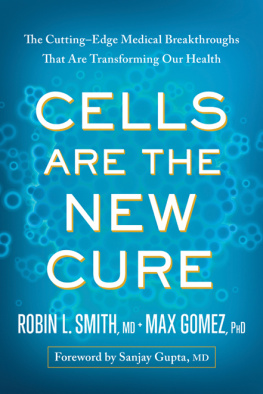The art of medicine consists of amusing the patient while nature cures the disease.
VOLTAIRE (16941778)
D AILY CONVERSATION IS FILLED WITH HEALTH CHATTER, the more so as we age. Back pain, vitamins, infectious disease, amoxycillin, CAT scans, calcium, randomized studies, skipped heartbeats, MRIs, intravenous, low-fat, high-fiber, resistant germs, joint pain, vancomycin, ciprofloxacin, intramuscular, broad spectrum, narrow spectrum, urinary, digestive, flu, subcutaneous, tuberculosis, West Nile, Lyme diseasethe vocabulary of health is infinite, the talk incessant, the opinions strong, the advice, both solicited and not, abundant. Part of this talk is even scientifically informed, although it is not always easy to know which part. The Medicine Cabinet of Curiosities is a random collection, put together with no more direction than that offered by the authors impulses, but it does contain, so far as possible, just facts, and many of them, assembled in the hope that the readers whims will at least occasionally coincide with those of the writer.
It should be needless to say, although it almost certainly is not, that there is in this book no medical advice whatsoever, and that anyone who uses it to diagnose or treat an illness, or to give advice based on its contents to others on how to do so, will be making a grave mistake.
There are citations to scientific papers and Web sites. Weve made them into endnotes so that they are less distracting, but they are not there for decoration, or to give the text an air of authority that it might otherwise lack. They are there to prove that The Medicine Cabinet does not make anything up. And you still have to read them. Well, all right, you dont have to read them, but theyre there if you want to, and you can always cite them in an argument.
This does not mean, we hasten to add, that there are no mistakes in this book. When you find one, as some of you no doubt will, please point it out. There is, however, no need to offer negative assessments of the authors intelligence, good faith, work habits, or ancestry, or to otherwise rub it in. All questioned facts will be carefully checked, and corrections will appear, duly noted and credited, in future editions.
This book is meant to be read in small doses, flipping from page to page at random, taking it up when the mood arrives and putting it down when it departs. It is arranged with this in mind, although we have divided it into sections, which we hope gives it a kind of organization, however vague the pattern and arbitrary the choice of headings. If you are looking for something specific, however, there is an index, which can be used in the usual way.
BY THE NUMBERS
Doctors will have more lives to answer for in the next world than even we generals.
NAPOLEON I (17691821)
H YDROGEN, MOSTLY. IN ELEMENTARY SCHOOL YOU HEARD that we are 65 percent water, or something like that, right? As usual, you didnt get the full story. In reality, your body is 62.91 percent hydrogen, 24.003 percent oxygen, and 11.97 percent carbonthats a little more than 98.89 percent of you, and weve only accounted for three elements. Youre 0.58 percent nitrogen, 0.24 percent calcium, 0.14 percent phosphorus, and 0.04 percent sulfur, so those four make up about another 1 percent. That leaves roughly 11 one-hundredths of 1 percent for everything else. You are about 0.0000000000000015259 percent radium. Thats 80 billion atomsnot very many.
Heres what a 155-pound man is made of, atom for atom:
The stapes, one of three bones in the middle ear. Its also the lightest bone in the body and helps to transmit sound vibrations to the inner ear.
The stapes and a penny, larger than life.
The femur, or thighbone, which runs from hip to knee. Its also the longest bone in the body and, if its in good health, could support about thirty times your weight.
Smaller than the width of a human hair is the description people sometimes use when theyre trying to describe something really, really small. But what exactly is the width of a human hair?
It varies, for a number of reasons. Different people have different hair thicknesses. Dark hair tends to be thicker than light-colored hair. Babies have finer hair than adults. Age thickens some body hairs. And each hair varies in thickness from the root to the tip. So the width of a human hair is a pretty imprecise figure any way you look at it.
How imprecise? Very. A good estimate is that a human hair can vary in thickness from about 15 microns (a micron is 39 one-millionths of an inch) to about 180 microns. So, big deal, we say: whats a few millionths of an inch between friends? Well, not much, but one hair can be twelve times thicker than another. If you simply mean that something is very thin, then the width of a human hair is probably good enough. But what if someone asked you how tall something is and you replied Its about as tall as a ladder? Do you mean a five-foot stepladder or a sixty-foot fire truck extension beam? In most everyday situations, a few microns one way or the other doesnt make much difference, but if youre designing the display coating for a TV screen, the circuitry for an iPhone, or a lithium-ion battery for a laptop computer, you have to be a lot more precise than the width of a human hair.
Nonhuman primates, like most mammals, are covered with fur. So why is it that humans are the only (mostly) hairless ape? Darwin thought it was unlikely that hairlessness evolved by natural selection alone, since hair protects skin against the damaging rays of the tropical sun. Which makes it even more puzzling, as a matter of biology, when you consider where we do have hairin our armpits, around our sexual organs, and on our heads.
A 1981 paper suggested that the answer has to do with heat dissipation. As the ratio of surface area to volume decreases, the advantage of having lots of insulation decreases, too. A 450-pound gorilla has a mass a thousand times that of a half-pound marmoset, but an exposed surface only a hundred times as great. So the great ape needs less fur to keep the heat in. When humans emerged from the forest to explore the open savannah, they developed hairlessness to allow heat to escape, and then sweat glands to cool their bodies by evaporation. The evolution of sweat glands allowed even more extensive hairlessness to evolve. Presumably the evolution of darker skin happened for the same reason. None of this, of course, explains the persistence of armpit and pubic hair.
A newer theory is that humans lost their hair to get rid of lice, fleas, and ticks and the diseases those animals carry, such as typhus, trench fever, and bubonic plague. This makes having less hair sexually attractive because it signals good health. And sexual attractiveness gives the trait survival value. Do we think this explains why women, and now increasingly men, want to rid their bodies of hair? Maybe. And then again, maybe not.
Fingernails and toenails are made of a protein called keratin, and the nails have several different parts, most of them with names youve probably never heard of. The eponychium, better known as the cuticle, is the piece of skin where the finger meets the bottom of the nail. The skin around the edges is called the paronychium. The hyponychium is the skin that connects underneath the tip of the nail. The nail plate is the part on top that you see and polish, and the nail bedsometimes called the quickis the tissue thats under the nail. The white half-moon at the bottom of your fingernail is called the lunula.














